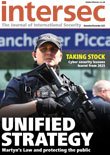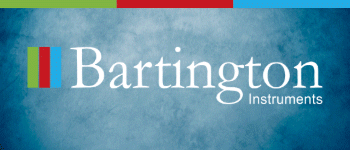Follow the money
Jeanne McKinney outlines the challenges of crippling the cash flow to terrorism
Cash to chaos is the dangerous game terrorists are playing, banking on the fact that no one is following their money. There are efforts, yet the financial networks to fund global militant operations are vast. Tracking financial transactions and transfers is not easy. On the US CIA website you will find a list of 60+ terrorist groups, each with a summary of their history, goals, leadership and organization, and a list of other traits including financial and other support.
Enumerable sources for funding and weapons support are attached to the various groups that include smuggling, donations from sympathisers, kidnapping and ransom, extortion, Iran, battlefield captures, and cyber financing campaigns. Each time you hear of suicide attacks (large and small), takeovers of cities, regions and governments, and massacres of civilians – it all begins with one thing: money used for evil purposes. It even comes in from Islamic charitable organisations, social media, port fees, stolen central bank funds and drug trafficking. In short, you name it…
It is deep, dark, layered, and impossible to always monitor all over the globe. Does it boil down to the individual states to track terror financing and not let up? That would be nice, but realistically it is an opportunity for corruption. A previous well-meaning leader can easily fall into it should the reward or threat be great enough.
The Department of Homeland Security (DHS) said in June 2024 that it: “has significantly expanded its ability to track and disrupt terrorist and criminal financing through combating bulk cash smuggling, closing weaknesses in our financial, trade and transportation sectors, combating mass-marketing fraud, attacking human smuggling and human trafficking organisations, and investigating organised retail crime rings.”
This may apply to tracking inside US borders, but what about the money leaving the country and ending up in terrorist hands in foreign countries? How does DHS explain the delivery of billions of dollars (in supposed humanitarian aid) to Afghanistan? The tracking chain essentially ends once the cash reaches a UN private bank inside the country.
“Since August 2021, the UN has purchased, transported and transferred at least $2.9-billion to Afghanistan using international donor contributions,” according to John F Sopko, Special Inspector General for Afghan Reconstruction (SIGAR) in a revealing January 2024 report, which lists the US as the biggest international donor coming in at a whopping $2.6-billion. When did counter-terrorism and deterrence switch off to facilitation and assistance to terror groups?
In December 2021, Da Afghanistan bank (DAB) controlled by the Taliban, began posting accounts of shipments of: “wrapped bundles of cash” on its social media. “The posts included arrival dates, shipment amounts, and photographs, including photos of what DAB said were officials unloading the UN cash shipment at Kabul Airport and photos of bundled cash deposited into a commercial bank vault,” states SIGAR.
The UN countered the Taliban DAB posting with a press release saying the cash was for: “humanitarian and developmental assistance”. They assured that the deposits are made into a private Afghan Bank and that: “none of the cash brought into Afghanistan is deposited in the Central Bank of Afghanistan nor provided to the Taliban de facto authorities by the UN”.
You cannot claim innocence, denial, or ignorance to the river of cash going into Afghanistan, as the: “UN purchases US currency from the Federal Reserve Bank of New York through a money services business and has the cash flown into Afghanistan.”
According to SIGAR, the cash must be converted to Afghan currency. The cash shipments began because Afghan banks could not fulfill international wire transfers because of a lack of domestic currency circulating in its economy. When you are a militant force that overthrows a government, you also obliterate that economy, unraveling the network of government programs, jobs, revenue leaving the Taliban cash poor. In steps the Federal Reserve Bank of New York to supply the UN with US currency it delivers to Afghanistan – supposedly checked and inspected through the transport process until it reaches a private Afghan bank the UN uses.
From there, says SIGAR, it is allegedly disbursed to PIOs (public international organisations) and GOs (non-governmental organisations). If they need afghanis (local currency) to fund operations, they “solicit bids from private banks” to convert the US-shipped cash. Since many private banks do not maintain enough afghanis to exchange substantial amounts, they purchase local currency through the Taliban-controlled DAB.
There are no reliable measures to counter and prevent money laundering and terrorist financing, confirms SIGAR. This includes ongoing concerns about DAB’s compliance with international banking laws; and even if DAB could process humanitarian monetary transactions with any success. There is no reason to believe the Taliban money changers can be trusted after 20 years of war and a breach of the withdrawal agreement.
SIGAR concludes since private banks will use UN-supplied US dollars to purchase local currency from the Taliban-controlled bank DAB, that the Taliban: “accumulates a large supply of US dollars through the conversion process of dollars for Afghanis.”
The UN’s stated premise to send cash shipments to Afghanistan is because the Afghan banking sector was not strong enough due to international sanctions and pressure not to assist the Taliban. The sanctions are there due to the Taliban’s overthrow of the democratically elected government of Afghanistan. This catapulted the banking sector into isolation and they became unable to deliver goods and services throughout the country. So send them billions in cash when they cannot be trusted?
The UN’s reason to deliver pallets of cash for humanitarian aid is one thing. But it well knows the dirty work the Taliban has done to the people and government of Afghanistan leaving a vast trail of blood of the innocent. A trail unhindered in the war’s final days by the US and NATO partners remaining in-country. They stood by and watched, not only helpless but accommodating, in Kabul – the last piece of ground held by US forces in August 2021. The Taliban was not thinking or planning for a “humanitarian crisis.” It caused one.
Of the 19 UN entities and 48 UN-partnered PIOs and NGOs expected to receive cash purchases between August 2021 and August 2023, SIGAR could not determine all who received payments. The UN will not disclose their names. The world is expected to rely on a UN team in Kabul to vet these humanitarian organisations. Yet, does the UN follow the money to the end users – the needy, homeless, jobless and hurting?
Both the US Department of State and Treasury approved the UN’s plan to purchase US cash to deliver to Afghanistan. This while US allies are still in hiding there. Were these agencies informed of the process as well as the risks of the cash falling into Taliban hands? The answer to that is: “yes.”
When SIGAR provided a draft of their report to State, it ultimately assured us things were well in hand to prevent diversion of cash. The conversion process itself leads to diversion. Treasury had no formal comments. We are aware the Taliban has allowed al-Qaeda to remain in-country and conduct recruitment and training. We also know ISIS launders money through Afghanistan…
“Treasury told us ISIS Core’s General Directorate of Provinces has probably transferred tens of thousands of dollars to its Afghanistan-based al-Siddiq Office. This office is responsible for overseeing ISIS activities in Asia and probably disbursed funds and guidance to ISIS branches and networks across the continent. In addition to employing unregistered money services businesses, established hawala networks, and cash couriers, al-Siddiq Office has increasingly used virtual assets service providers to finance its subordinates.” (US Dept. of the Treasury, OIG-CA-24-012, 29 February, 2024)
The Highland County Press reported In November 2023, that US Sen. Josh Hawley, R-Mo. suggested the Senate Judiciary Committee investigate a Democratic Party-affiliated group reportedly linked to funding of Palestinian terrorism. “If the Senate Judiciary Committee is going to hand out subpoenas, let’s start with this Democrat dark-money group that has poured $1-million into a Palestinian terror-tied charity,” Hawley posted on X. The post linked to a Washington Examiner story that details a network of left-leaning groups that steered funding (over $10-million in 2021) toward a progressive charity with ties to a terror group.”
The charity, Alliance for Global Justice, switched payment processing companies when French member Collectif Palestine Vaincra (CVP) was linked to an Israeli-designated terror coalition, Samidoun. CVP was “linked to the Popular Front for the Liberation of Palestine terror group.” (The Highland County Press).
The news of the death of Bilal al-Sudani, a key operative and facilitator for the Islamic State, was welcomed in January 2023. United States special operation forces killed the leader in a remote cave complex in northern Somalia. Ten other terrorist operatives were also killed, Pentagon officials said. Al-Sudani was on US intelligence radar for years, according to Voice of America.
According to an extensive study from George Washington University’s Program on Extremism, Al-Sudani was a Sudanese national and originally a member of al-Shabaab. He primarily financed foreign fighter operations and facilitated travel of recruits in Somalia. Upon his defection to ISIS in 2015, he had extensive: “contacts and experience” deemed to wield an “outsized effect” in the financial/facilitation network of te Islamic State. Day-to-day operations at the regional ISIS office, al-Karrar, fell to al-Sudani. The al Karrar office extends to affiliate IS-Khorasan in Afghanistan, al Karrar reportedly sending $25,000-worth in cryptocurrency by the month.
Unfortunately, counter-terrorism has been downgraded as a US national security priority. Especially since the fall of Afghanistan to the Taliban and the refusal to talk about it. Borders are open and pro-terrorist sympathies abound. Funding terrorists is a mistake; those who do will not be spared by their sword when confronted. It takes a constant watch.
With the death of one influential terrorist like al-Sudani and others who went down with him, relationships and contacts are disrupted and not easily rebuilt. Once the US has intelligence on those networks that creates vulnerabilities to force terror groups to change and ask themselves how that intelligence was obtained. They are forced to move, like wanderers, with no official home except in overrun governments.
Once we have eyes on cash transfers, money laundering hubs and even physical caches of cash, we have the opportunities to cripple their operations by removing the means to fund their tactics. Where are terror group soft spots, logistical hubs and leadership locations? When they are taken off the game board, will the next reconsolidated network operate the same? The demons await the next bombing, shooting or execution of innocent men, women and children. We must not feed it its insatiable hunger for cash to sharpen and widen its terrible global blow.
JEANNE MCKINNEY is an award-winning military journalist, book author and documentary filmmaker. She recently published the true historical account of Triumph Over the Taliban: The Untold Story of US Marines’ Courageous Fight to Save Camp Bastion (now on Amazon). McKinney also wrote, directed, and is currently producing a limited documentary series called Ronin 3: The Battle for Sangin – that follows 3rd Battalion, 5th Marines through a labyrinth of murder holes and IEDs in a heavily entrenched Taliban stronghold in 2010, on mission to restore security to the local Afghan people.









